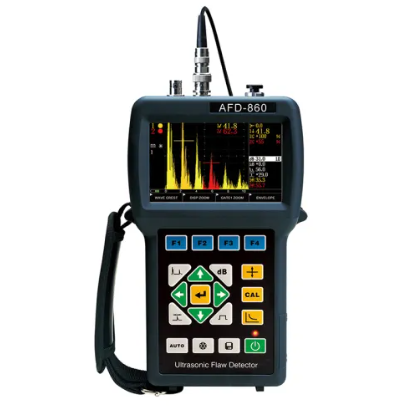NDT Equipment: An Overview of Non-Destructive Testing
Non-destructive testing (NDT) plays a crucial role in ensuring the safety, integrity, and reliability of various structures, components, and materials across industries. NDT equipment allows inspectors and engineers to assess the quality and condition of materials without causing damage, making it an essential tool for quality control, maintenance, and asset management.
1. Types of NDT Equipment:
NDT encompasses a wide range of techniques and equipment, each suited to different materials, structures, and inspection requirements. Some common types of NDT equipment include:
Ultrasonic Testing (UT): UT equipment uses high-frequency sound waves to detect internal flaws, discontinuities, and defects in materials. It consists of a transducer, which emits ultrasonic waves, and a receiver, which detects and analyzes the reflected waves.
Radiographic Testing (RT): RT equipment utilizes X-rays or gamma rays to penetrate materials and produce images of internal structures, welds, and components. It includes X-ray machines, gamma-ray sources, and imaging devices such as film or digital detectors.
Magnetic Particle Testing (MPT): MPT equipment detects surface and near-surface defects in ferromagnetic materials by applying a magnetic field and observing the response of magnetic particles. It involves magnetic yokes, electromagnetic coils, and magnetic particle suspensions.
Liquid Penetrant Testing (LPT): LPT equipment detects surface defects and discontinuities in non-porous materials by applying a penetrating liquid and observing the capillary action of the liquid. It includes penetrant materials, developers, and inspection lights.
Eddy Current Testing (ECT): ECT equipment uses electromagnetic induction to detect surface and subsurface defects, conductivity variations, and material properties. It consists of eddy current probes, coils, and instrumentation for signal analysis.
2. Applications of NDT Equipment:
NDT equipment finds applications across various industries and sectors, including:
Manufacturing: NDT is used to inspect raw materials, components, and finished products during manufacturing processes, ensuring compliance with quality standards and specifications.
Construction: NDT is employed to assess the integrity of structures, welds, pipelines, and concrete elements, detecting defects, cracks, and corrosion that could compromise safety and performance.
Recommended article:
What is the mortality rate for wingsuit flying?
Unlocking the Power of a 200 kg Thrust Motor: FAQs Answered!
Which new metric will revolutionize drone efficiency measuring?
Unveiling the Secrets of Flying Wings: Your Ultimate Guide!
Revolutionizing Construction: Are Weight-Carrying Drones the Future?
Unlocking the Secrets of Drone RPM: What You Need to Know
Everything You Need To Know To Find The Best Digital Rockwell Hardness Testing MachineAerospace: NDT is essential for inspecting aircraft components, engine parts, and critical aerospace structures to detect fatigue, cracks, and material degradation, ensuring airworthiness and reliability.
Automotive: NDT is utilized in the automotive industry to inspect welds, castings, and components for defects, ensuring the safety and performance of vehicles.
Power Generation: NDT is critical for inspecting power plant components, pipelines, and boilers to detect corrosion, erosion, and defects that could lead to failures or accidents.
3. Significance of NDT Equipment:
NDT equipment plays a vital role in:
Ensuring Safety: NDT helps identify defects and flaws that could compromise the safety and integrity of structures, components, and systems, preventing accidents and failures.
Quality Assurance: NDT ensures the quality and reliability of materials, products, and components by detecting defects, discontinuities, and deviations from specifications.
Cost Savings: NDT allows for early detection of defects and flaws, enabling timely repairs and maintenance to prevent costly downtime, repairs, and replacements.
Compliance: NDT helps industries comply with regulatory requirements, codes, and standards governing the quality and safety of materials, products, and structures.
Conclusion:
NDT equipment is indispensable for quality control, safety assurance, and asset management across industries. By employing a variety of NDT techniques and equipment, inspectors and engineers can assess the condition and integrity of materials and structures without causing damage, ensuring the safety, reliability, and efficiency of critical assets. As technology advances, NDT equipment continues to evolve, offering enhanced capabilities, accuracy, and efficiency in detecting defects and ensuring the integrity of materials and components.
What is the maximum weight a drone can lift? ... - Medium
How High Can A Drone Fly | Highest Altitude Drones
Guide to Non Destructive Testing and the NDT Supply
Hardness testing
How Will Reciprocal Frequency Counters Redefine Communication?
Unlocking Precision: The Ultimate Guide to Pulsed Signal Generators
Top Wholesale Stopwatches Trends for 2025 You Need









Comments
0